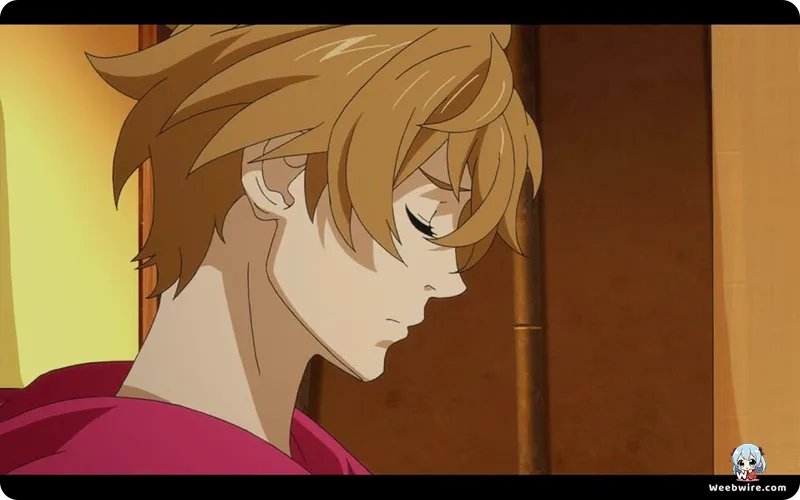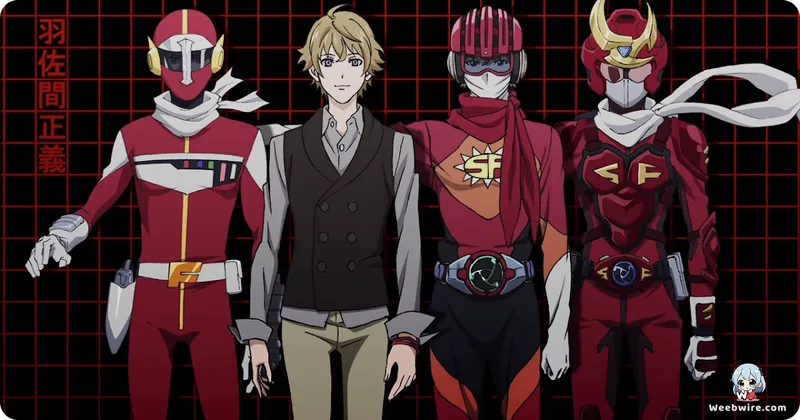Samurai Flamenco: The Anime That Rewrote the Rules of Superhero Storytelling

In the expansive world of anime, where storytelling often follows established paths, a truly rare and extraordinary series occasionally emerges. These groundbreaking works chart a course so audacious they leave audiences both astonished and deeply engrossed. One such series is Samurai Flamenco, an original anime from 2013. It began its journey as a deceptively straightforward tale of a male model transforming into an amateur crime-fighter. What unfolded, however, was an unparalleled, meta-commentary that brilliantly deconstructed the tokusatsu genre, the very essence of superheroism, and the art of storytelling itself. Far from a conventional heroic narrative, Samurai Flamenco stands as a masterclass in unexpected twists, driven by a creative vision that embraces idealism and delightful absurdity in equal measure.
The series introduces us to Masayoshi Hazama, a young model who, despite a complete absence of superpowers, boldly dons a costume to become the vigilante known as Samurai Flamenco. His initial endeavors are hilariously mundane, tackling minor infractions like littering or petty theft, often with more zealous enthusiasm than actual effectiveness. This early premise established a quirky, slice-of-life comedy infused with a touch of vigilante action, leading viewers to anticipate a lighthearted romp. Yet, this seemingly conventional setup was merely the prelude to an unprecedented whirlwind of narrative upheaval.
A Journey of Radical Genre Shifts
Samurai Flamenco’s most defining and arguably most shocking characteristic lies in its radical, almost disorienting, genre shifts. What commenced as a grounded, albeit humorous, exploration of a powerless hero swiftly escalated into a full-blown tokusatsu parody, then morphed into a cosmic superhero epic, and even evolved into a profound philosophical inquiry into justice and evil. The introduction of increasingly bizarre and formidable adversaries, ranging from a talking gorilla wielding a cleaver to a sentient Guillotine Gorilla and beyond, shattered any preconceived notions about the show's trajectory. These transformations were not gradual; they were abrupt, daring, and unapologetically committed, culminating in a truly singular viewing experience that both polarized and captivated audiences. This solidified its status as a revered cult classic for those who appreciated its fearless experimental spirit.

The Visionary Behind the Script
A fascinating insight into Samurai Flamenco’s genesis is the pivotal involvement of Shinji Nojima as the series composer and screenwriter. Nojima is a highly acclaimed and influential figure in Japanese television, celebrated primarily for crafting live-action dramas that delve into complex psychological themes, pressing social issues, and often darker narratives. His impressive filmography includes critically lauded works such as High School Teacher and Heaven’s Coin. The fact that a writer of his caliber, predominantly recognized for realistic human dramas, penned an anime that ventures into such surreal and exaggerated territory speaks volumes about his remarkable versatility and the production team’s audacious vision. Nojima’s profound influence is evident in the series’ surprisingly deep character studies, particularly Masayoshi’s unwavering, almost naive idealism and Goto’s grounded cynicism, alongside the persistent philosophical questions about heroism and justice that resonate even amidst the most outlandish scenarios.
Manglobe's Lasting Legacy
Furthermore, the anime’s production studio, Manglobe, holds a significant, albeit poignant, place in its history. Manglobe, renowned for producing diverse and often visually distinctive anime like Ergo Proxy, Saraiya Goyou (House of Five Leaves), and Gangsta., imbued Samurai Flamenco with a unique artistic flair. The studio’s dedication to original works frequently resulted in narratives that pushed creative boundaries, and Samurai Flamenco stands as one of their most daring creations. Tragically, Manglobe declared bankruptcy in 2015, rendering Samurai Flamenco one of its final major original productions. This unfortunate circumstance adds a somber yet significant layer to the series’ legacy, symbolizing a last, vibrant surge of creative energy from a studio that consistently delivered memorable and often challenging anime.
Beyond the Absurdity: Meta-Commentary and Idealism
Beyond its structural eccentricities, Samurai Flamenco is rich with insightful trivia and layered meta-commentary. The series continually deconstructs and reassembles superhero tropes, expertly playing with audience expectations regarding secret identities, origin stories, and the escalation of threats. Characters frequently offer witty observations on the inherent absurdity of their predicaments, artfully blurring the lines between the narrative and the audience’s perception. The show’s unwavering commitment to Masayoshi’s pure, unadulterated belief in justice, even when confronted with increasingly ludicrous adversaries and personal hardships, serves as its unwavering emotional core. His extraordinary journey, from a simple vigilante to a cosmic savior, presents a bizarre yet profoundly compelling exploration of what it truly signifies to be a hero in a world that often dismisses idealism.
In essence, Samurai Flamenco endures as a singularly unique entry in the anime canon, a powerful testament to unbridled creativity and a bold willingness to defy conventional storytelling. Its wild genre shifts, the unexpected collaboration with a celebrated live-action drama screenwriter, and its poignant place in the history of a beloved animation studio collectively elevate its status as a truly fascinating and essential piece of anime history. For those seeking an anime experience that is anything but predictable, Samurai Flamenco promises an unforgettable, mind-bending ride that continues to ignite discussion and command admiration years after its initial broadcast.
Credits
Samurai Flamenco
Author
Shinji Nojima (Original Concept, Series Composer, Screenwriter)
Cover Art
Chinatsu Kurahana (Original Character Designer)
Studio
Manglobe
Publisher
Aniplex
Producers





